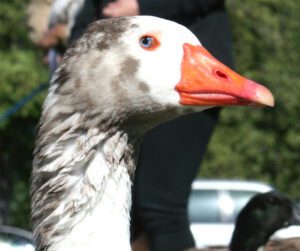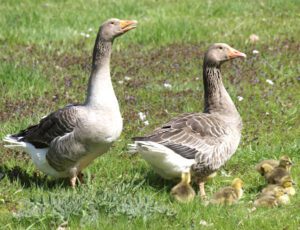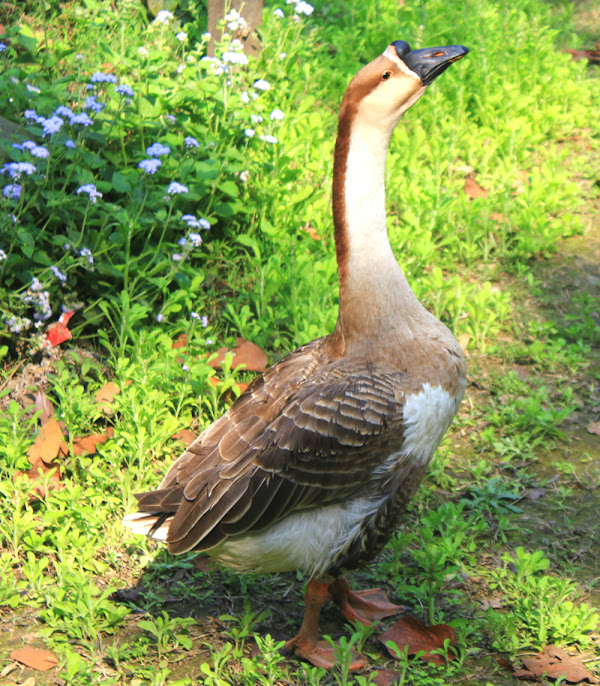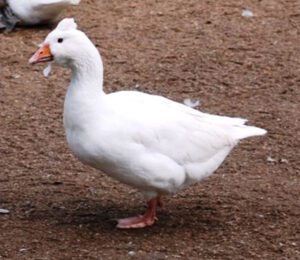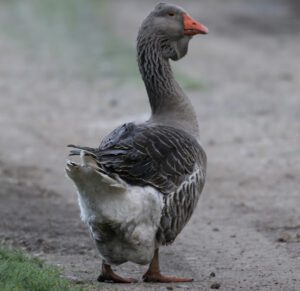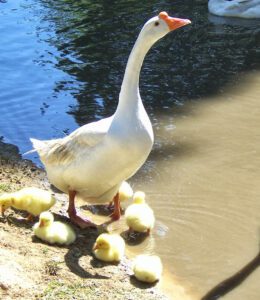African goose are not actually from Africa. The breed descended from the wild swan goose, just like their close cousin the Chinese goose. Actually the origin of this breed is not well documented.
Historical studies show that the African goose has been known by many other names. And it’s origin has been attributed to many continents. The breed seems to have arrived in North America on ships that traveled around the world. So the exact origin of the African goose is ambiguous.
There are two theories persist about the origin of this bird. One purports that ‘the African goose are the result of crosses of swan geese and Chinese geese’. Other asserts that ‘they are pure derivations of the swan goose’. And their unique traits are simply the result of selective breeding.
Whichever is correct about their origin, the breed has existed as a distinct breed since at least the middle of the nineteenth century. The African goose breed was admitted into the American Poultry Association’s Standard of Perfection in the year of 1874. Review more details below.
Characteristics of African Goose
African goose is a heavy breed. But it is not as heavy as the Toulouse or White Embden. But the African goose grow and mature early than these two goose breeds. They are different from other goose and have a large black knob on their head and a dark stripe down the back of the neck. The breed is very dignified looking and attract a great deal of attention.
They may or may not have a dewlap. And their dewlap is slow to develop in some birds, taking 12 to 36 months to develop fully. The African goose is desirable especially for crossing with the heavier goose breeds.
The breed is close relative of Chinese goose and has similar knob above their beak. The African ganders often have a higher pitched call than the geese and are taller. But the females are shorter and stockier. And the females have larger keels or lobes.
The African geese appear in three color varieties, which are Buff, Brown and White. The White variety has all white plumage and orange colored bills and knobs.
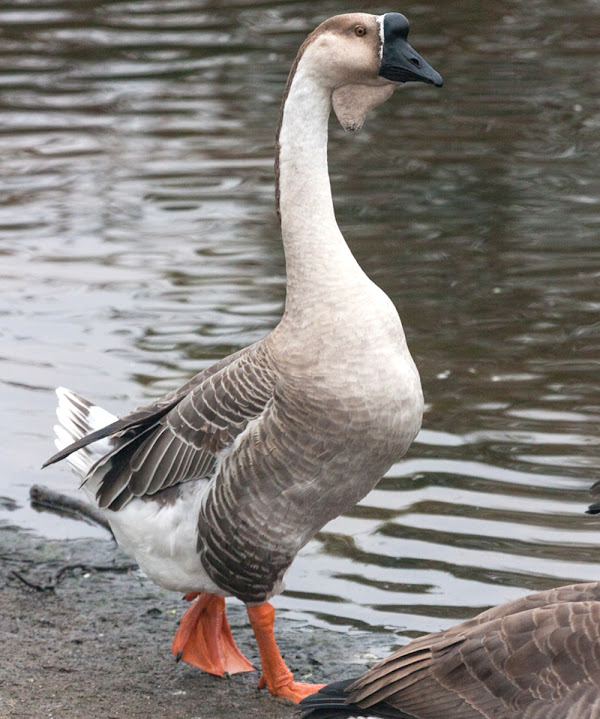
And the Brown variety has plumage with irregular shades, from a very light to dark brown. And they have black bills and knobs. Standard weights: Old Gander: 9.98 kg, Young Gander: 8.17 kg, Old Goose: 8.17 kg, Young Goose: 6.8 kg. Photo form Wikipedia.
Uses
African goose is one of the heavy weight breeds which was developed mainly as a meat bird. Sometimes they are crossed with Toulouse goose for meat production. Commercial meat goose are raised mainly for meat and feathers.
Special Notes
The African goose breed is better known for their docile temperaments. Females are not among the good egg layers. They usually lay 20-40 eggs per year. Their eggs are extra large in size and white in color. Their eggs weight 5-8 ounces and hatch in 30-32 days.
African geese are long lived birds. And they produce for many years under normal circumstances. Geese form bonds with their mates and each gander can be mated with more than one goose.
Generally one gander can be mated with 2 to 6 geese depending on the individual birds. The African goose are very hardy and their knob can be subject to frostbite in extreme cold. However, review full breed profile of African goose breed in the chart below.
| Breed Name | African |
| Other Name | The breed is also called by some other names. |
| Breed Purpose | Meat |
| Special Notes | Docile, Friendly, Fast Growing, Hardy |
| Breed Class | Heavy |
| Broodiness | Average |
| Weight | Standard weights: Old Gander: 9.98 kg, Young Gander: 8.17 kg, Old Goose: 8.17 kg, Young Goose: 6.8 kg |
| Climate Tolerance | All Climates |
| Egg Color | White |
| Egg Size | Extra Large |
| Egg Productivity | Poor (20-40 eggs per year) |
| Flying Ability | Poor |
| Rarity | Common |
| Varieties | White, Buff & Brown |
| Country of Origin | Probably form China |

